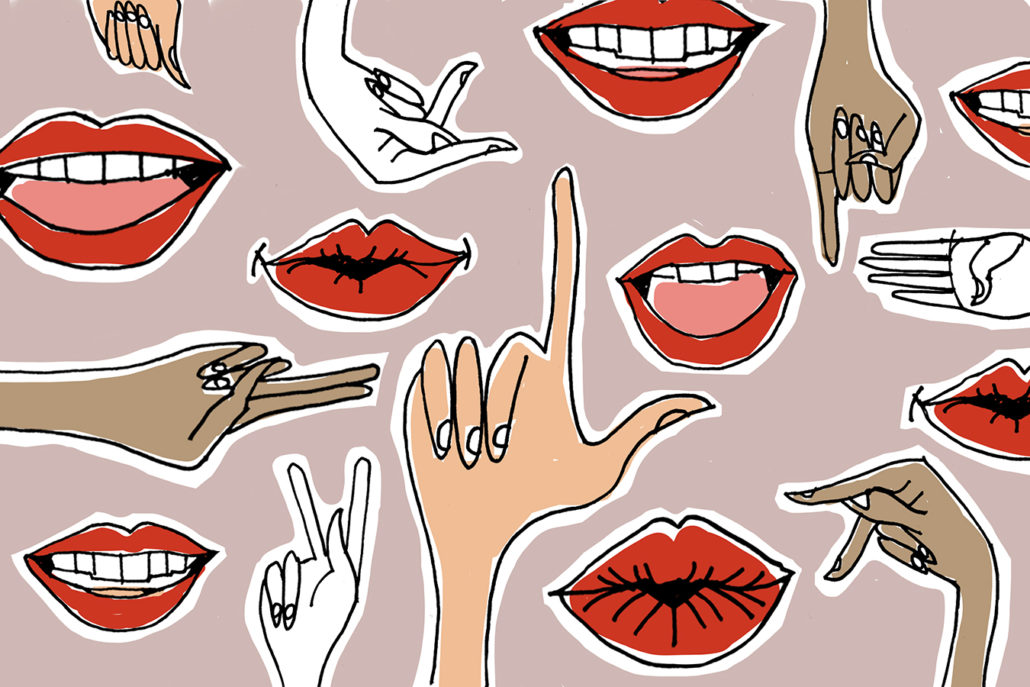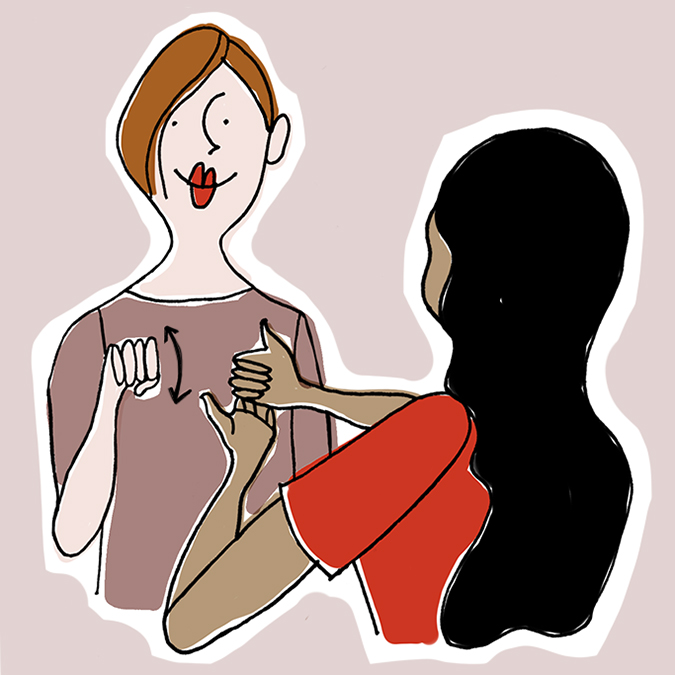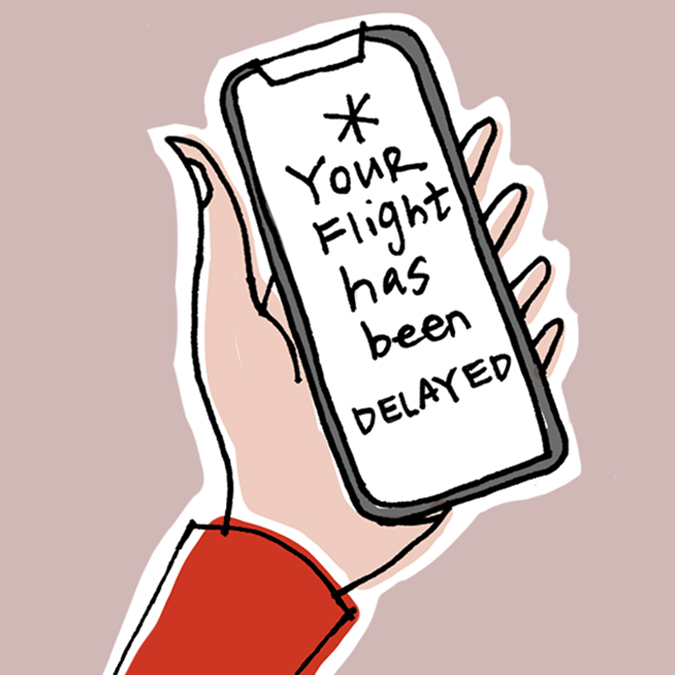
How to communicate effectively—and respectfully—with someone who’s deaf or hard of hearing
If someone approaches to talk to me and I don’t grasp what they’re saying right away, I’ll say, “Sorry, I’m deaf. Could you please repeat that?” Surprisingly often, the other person will respond, “I’m sorry,” and just walk away. But what I don’t need is pity; it would be way more helpful—and thoughtful—for hearing people to learn how to hold a conversation with someone like me who is deaf or hard of hearing.
I’m oral deaf, which means I have profound hearing loss, and I use speech and the combination of hearing aids and lip-reading to communicate with hearing people. At age 18, I learned American Sign Language (ASL). Today I’m a part-time American Sign Language teacher at Seneca College and Deaf Access Simcoe Muskoka.
My experiences in many different contexts have shown me that hearing people are just not educated enough about deaf people, and they don’t know how to communicate with us politely and effectively. I’ve even had friends who told the server in a restaurant that they’re deaf, and then were handed a menu in Braille!
Learning deaf etiquette and communication strategies is an important way to help make our communities more inclusive. Ideally, these skills would be taught to all kids at a young age in schools. Service providers—especially medical service providers—should absolutely know the basics, too. Following these tips and strategies is a good start.
1. Make a polite first approach to a person who is deaf or hard of hearing.
If you know someone is deaf or hard of hearing, get their attention before beginning to speak. It is difficult for someone with hearing loss to catch up when turning in halfway through the first sentence. Polite ways to catch the person’s attention are to tap on their shoulder or wave.

2. Don’t assume how a deaf person communicates; just ask.
There are various types (and degrees) of deafness and various ways of communicating as a deaf person. Some deaf people can’t hear at all and some hear partially. Some use hearing aids or wear a cochlear implant and some opt to not use a hearing device. There are deaf people who speak and deaf people who prefer to use sign language. Hearing people should never make assumptions—ask the person with hearing loss what you can do to make communication easier and more effective. To initiate a conversation, try speaking first. If either of you has trouble understanding the other, get a pen and paper or use cellphones to write things back and forth.
3. Make lip-reading easier.
If your conversation partner wants to read your lips, you should make sure you don’t talk with food in your mouth, while chewing gum or when smoking so your words are clear. It’s also best to make sure the room is well-lit and that you don’t stand with the light behind you when you’re talking, as it will be hard to see your face and read your lips properly. Do not shout or overemphasize your words, as this distorts speech and makes speech-reading difficult. But do use gestures and facial expressions while having a conversation. The most annoying thing to me is when I let a person know I’m deaf and that they need to face to me when speaking, but instead, they try speaking into my ear.
4. Be thoughtful at social gatherings so people who’re deaf feel included.
I often feel excluded at parties and family gatherings when I can’t keep up with group conversations. People could help me by pausing to let me know what they’re talking about or by having a one-on-one conversation with me, so I am not left out. It would be nice if more people learned American Sign Language, too. ASL is a recognized language, just the same as spoken languages, such as English, French and Japanese, and it’s not hard to learn some basic everyday signs. Also, it’s fun to speak with your hands!
5. Foster an inclusive workplace culture.
On the job, I’ve had people flap their hands around, pretending they know sign language. One time, at a company I used to work for, I was in a town hall meeting and someone asked me in front of everyone, “What’s the sign for ‘shit’?” So unprofessional! If you’re in a managerial position, ensure that the workplace is inclusive and disrespectful behaviour is never tolerated.
Also, employers should modify jobs for people who are deaf and hard of hearing; for example, by eliminating telephone work or front-line tasks with customers, and having an interpreter at meetings. And if you’re interviewing candidates for jobs, don’t call for a preliminary phone conversation, as many employers do. If a potential employer calls my cell, which I can’t answer, then I miss out on the interview and ultimately the job. And the sad fact is, even if we do get that first interview, many employers turn us down anyway because of hearing loss, even though we spend our lives finding ways to adapt to hearing culture and bridge communication, which gives us strong problem-solving and interpersonal skills. If you’re not sure how to adapt, just ask!

6. If you provide a service, make your communication system visual, too.
A big frustration is when I go to a hospital or clinic and I let the staff know that I’m deaf, but they still call out my name. I often miss my turn. And last week my boyfriend (who is also deaf) and I were at the airport waiting to board our flight at the gate. We were flying out to Newfoundland, and we discovered at the last minute that they changed our gate number and then made an announcement, which of course we didn’t catch. We could have ended up in Halifax! In public communication systems, everything should be visual as well as auditory. You can effectively show a name or number on a screen, as well as calling it out. And if you’re making an appointment for someone, you should use email or text and not just leave a voice mail.
7. Keep educating yourself and others about deaf etiquette.
Some people underestimate me because I am deaf—they think I can’t do things hearing people can do. That’s so wrong. What I’ve shared here is just a primer, but there’s a lot more action you can take to help ensure deaf people are fully included, respected and able to contribute to their full potential in every situation. For more learning resources created with and by deaf people, connect with Canadian Hearing Services, the Ontario Association of the Deaf and the Bob Rumball Canadian Centre of Excellence for the Deaf.